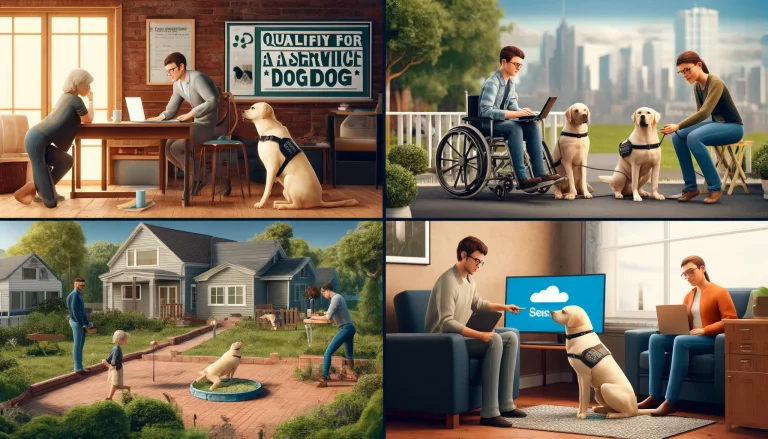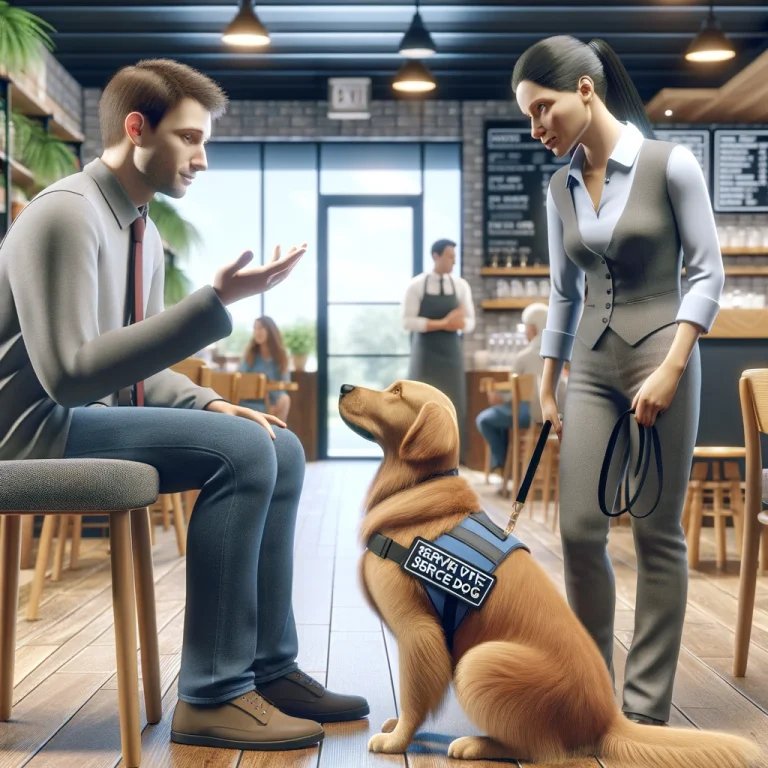Navigating public transportation with your service dog can be challenging, but with the right preparation and knowledge, you can make the experience smooth and stress-free. This guide will provide you with essential service dog public transportation tips, ensuring that you and your service dog can travel confidently and comfortably. By the end of this article, you’ll have practical advice and strategies for traveling with service dogs and ensuring service dog accessibility on public transit.
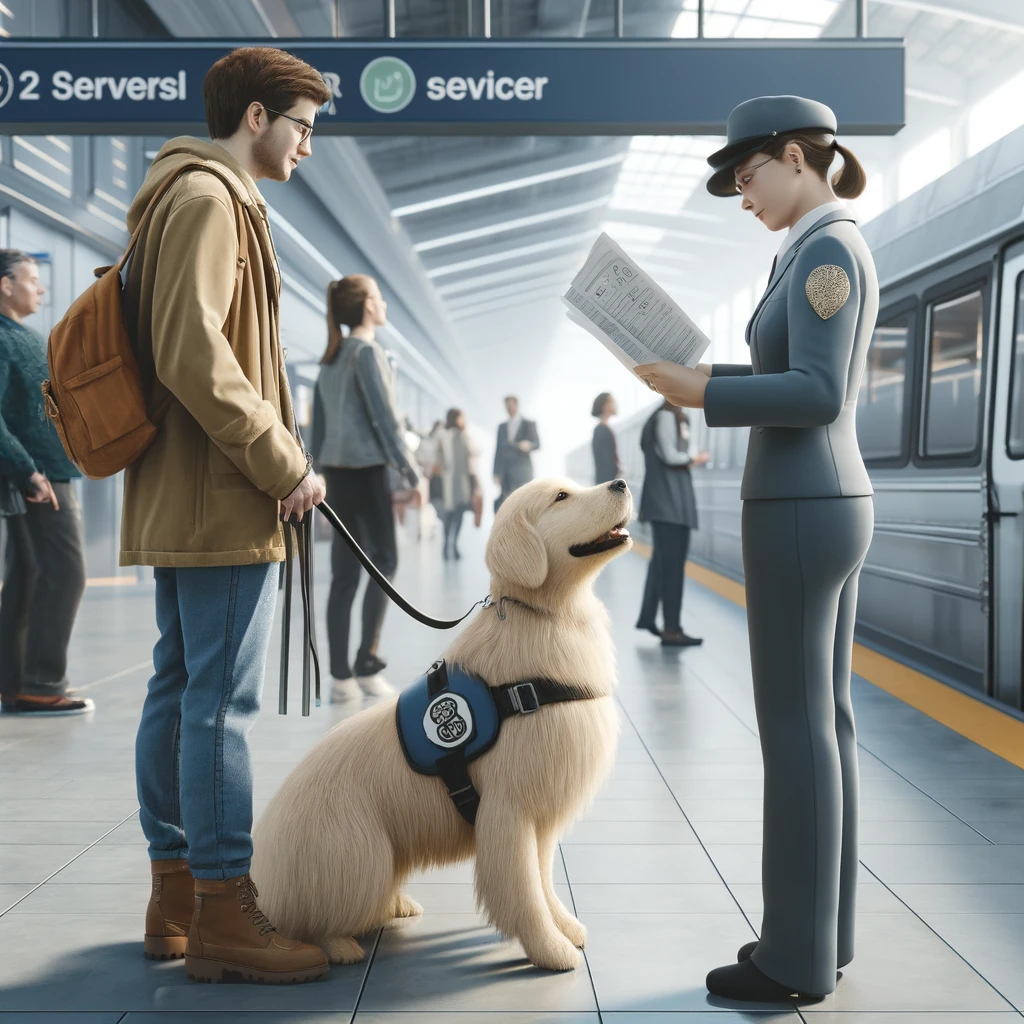
Understanding Your Rights
The Americans with Disabilities Act (ADA)
The ADA guarantees the right of individuals with disabilities to bring their service dogs into public places, including public transportation. Service dogs are trained to perform tasks for individuals with disabilities, and they are allowed on buses, trains, subways, and other forms of public transit.
Key Provisions
- Public Access: Service dogs are allowed in any area open to the public, including transportation vehicles.
- No Extra Fees: You cannot be charged extra for bringing your service dog on public transportation.
- Inquiries: Transportation staff can only ask two questions: if the dog is required because of a disability and what tasks the dog is trained to perform.
Preparing for Your Trip
Training and Socialization
A well-trained service dog is essential for smooth travel. Ensure your dog is accustomed to different environments, noises, and crowds. Regular socialization and exposure to various public settings will help your dog remain calm and focused.
Necessary Documentation
While the ADA does not require documentation, carrying identification or a letter from your doctor can be helpful in case of any disputes or misunderstandings. This documentation can serve as a quick way to explain your dog’s role and your rights.
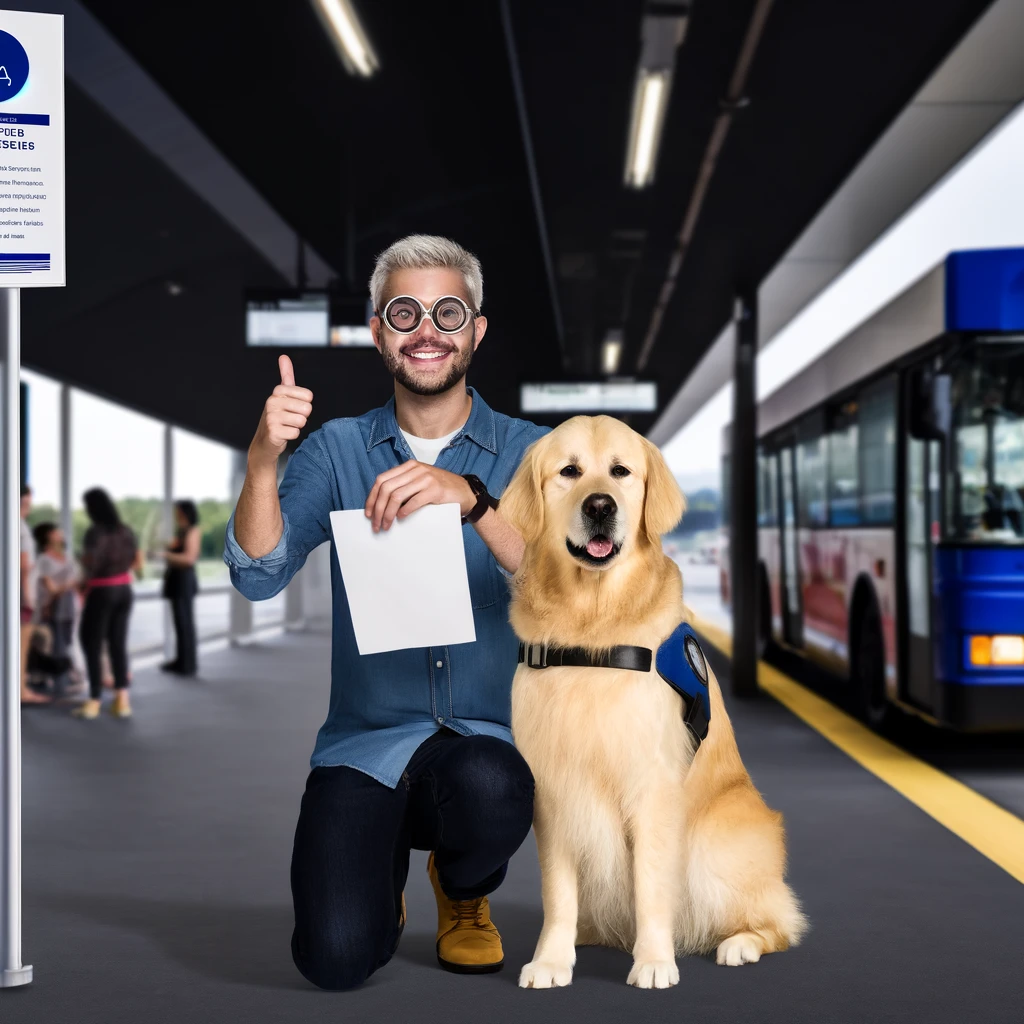
Service Dog Public Transportation Tips
Plan Your Route
Before you travel, plan your route and familiarize yourself with the public transit system you’ll be using. Check for any specific rules or guidelines for service dogs. Knowing where to board, exit, and transfer will make your journey smoother.
Choose the Right Time
Traveling during off-peak hours can make the experience less stressful for both you and your service dog. Crowded vehicles can be overwhelming, so try to avoid rush hours when possible.
Use the Correct Gear
Equip your service dog with a comfortable harness and an identification vest that clearly states they are a service dog. This helps avoid unnecessary questions and ensures your dog is easily identifiable.
Traveling with Service Dogs
Boarding the Vehicle
When boarding, make sure your service dog is under control and close to you. Use commands to guide them on and off the vehicle safely. If you’re using a bus, enter through the front door where the driver can see you and assist if needed.
Seating Arrangements
Choose a seat where your service dog can sit or lie down comfortably without obstructing the aisle. Some public transportation vehicles have designated areas for individuals with disabilities; use these spaces if available.
Handling Distractions
Public transportation can be noisy and crowded, which can distract your service dog. Use positive reinforcement to keep your dog focused. Reward them for good behavior and calmly redirect their attention if they become distracted.
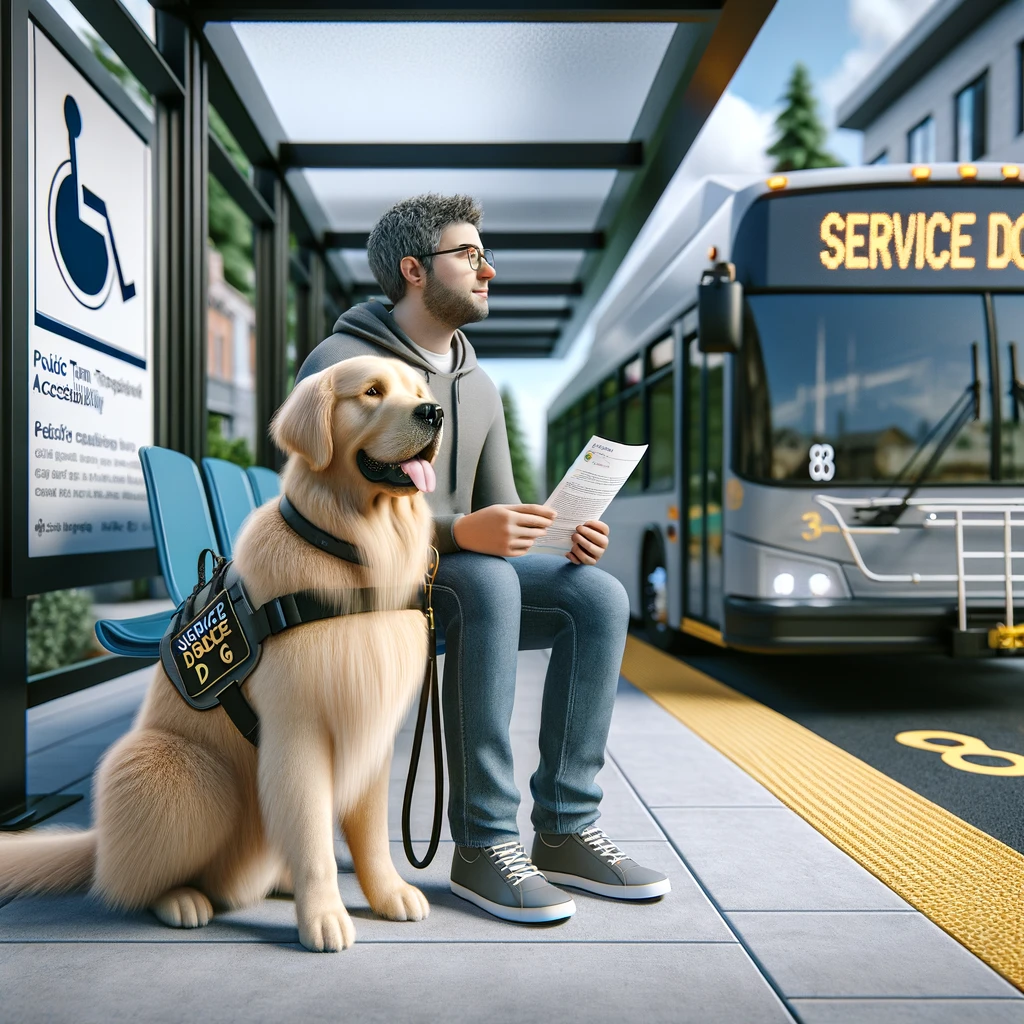
Service Dog Accessibility on Public Transit
Dealing with Challenges
Despite legal protections, you might encounter challenges when using public transportation. If you face any issues, remain calm and assertive. Politely explain your rights under the ADA and provide any necessary documentation.
Communicating with Staff
If you encounter resistance or lack of understanding from transportation staff, request to speak with a supervisor. Higher-level staff members are often more familiar with ADA regulations and can help resolve the situation.
Additional Tips for a Smooth Journey
Regular Training Refreshers
Keep your service dog’s training sharp with regular refreshers. Practice commands and behaviors that are essential for public transportation, such as “sit,” “stay,” and “leave it.”
Health and Safety
Ensure your service dog’s health is a priority. Regular veterinary check-ups and a balanced diet are crucial. Consider pet insurance to cover unexpected medical expenses and ensure your dog remains healthy and capable of performing their duties.
Importance of Pet Insurance and Service Dog Products
Investing in pet insurance and high-quality service dog products is essential for maintaining your dog’s health and effectiveness. Pet insurance provides financial protection for unexpected medical expenses, ensuring your dog receives the best care without causing financial strain. Look for policies that cover routine care, emergencies, and chronic conditions.
At ServicePupSolutions.com, we offer a range of products to support your service dog’s training and daily needs. High-quality vests, harnesses, and identification tags ensure your dog is comfortable and easily identifiable, which is crucial for their role as a service dog.
Self-Training Options
For those interested in training their service dog themselves, ServiceDogOwners.com provides valuable resources and guidance. Self-training can be a rewarding experience, allowing you to build a strong bond with your service dog while tailoring their training to your specific needs.
Conclusion
Navigating public transportation with your service dog requires preparation, patience, and knowledge of your rights. By following these service dog public transportation tips, you can ensure a smooth and successful journey. Remember, a well-trained service dog is your best companion, making travel easier and more enjoyable.
For more resources and high-quality service dog products, visit ServicePupSolutions.com. And for those interested in self-training options, explore the comprehensive guides available at ServiceDogOwners.com.
Searching for a way to boost your income while keeping your service dog by your side? Learn how Digital Marketing and Affiliate Marketing can launch your Side Hustle or new career and increase your earnings alongside your loyal companion. Click Here to find out more and start your journey today!


